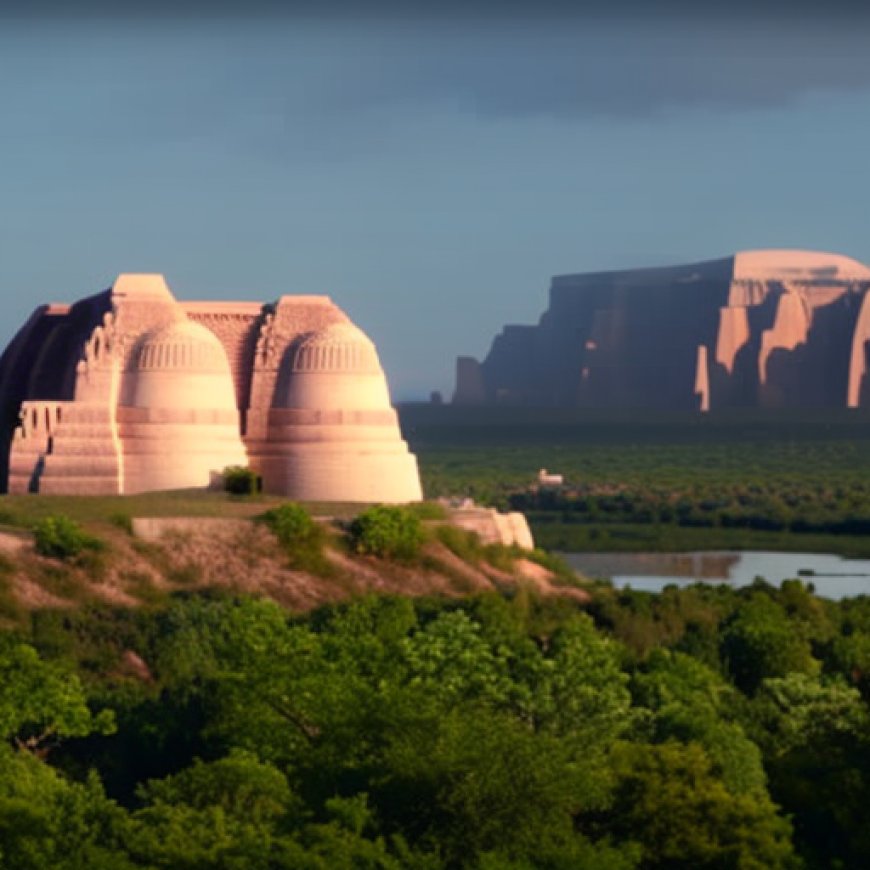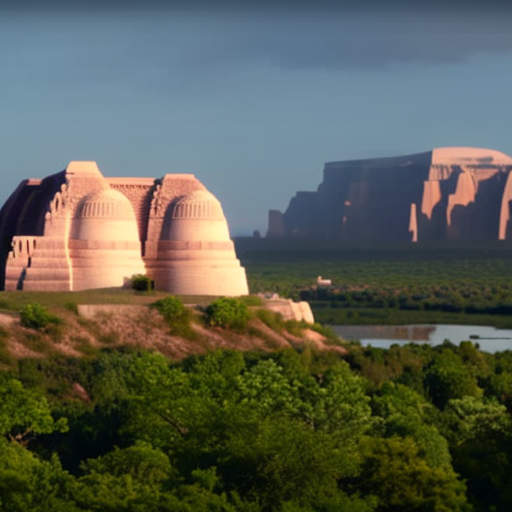Conservation Groups Defend Baaj Nwaavjo I’tah Kukveni National Monument, Antiquities Act
Conservation Groups Defend Baaj Nwaavjo I'tah Kukveni National Monument, Antiquities Act Center for Biological Diversity


Conservation Groups Intervene to Defend Baaj Nwaavjo I’tah Kukveni – Ancestral Footprints of the Grand Canyon National Monument

PHOENIX— Conservation groups filed a motion to intervene today in defense of President Biden’s designation of Baaj Nwaavjo I’tah Kukveni – Ancestral Footprints of the Grand Canyon National Monument in Arizona. The Arizona legislature and others filed lawsuits in February attempting to overturn the monument designation and attacking the Antiquities Act as unlawful.
The Significance of Baaj Nwaavjo I’tah Kukveni – Ancestral Footprints of the Grand Canyon National Monument
- The monument lies within the homelands of and holds great cultural significance to numerous Tribes, who led the effort to protect the monument.
- The Havasupai Tribe, the Hopi Tribe, and the Navajo Nation also moved to intervene on Wednesday.
“This monument is a testament to the decades of tireless advocacy by numerous Tribes to secure federal protections for their ancestral lands and waters around the Grand Canyon. Unfortunately, the Arizona legislature and other parties have sued to eviscerate the monument and to gut the Antiquities Act,” said Michael Toll, staff attorney for the Grand Canyon Trust. “The legislature relies on the same basic arguments that have been rejected by every court to consider them, and we’ll work for that same outcome in this case.”
President Biden’s Designation and the Importance of the Monument
- President Biden lawfully designated Baaj Nwaavjo I’tah Kukveni – Ancestral Footprints of the Grand Canyon National Monument in August 2023, answering longtime calls from Tribal leaders to permanently protect over 900,000 acres adjacent to Grand Canyon National Park. The monument safeguards sacred Indigenous cultural sites as well as remarkable archaeological and ecological features from uranium mining and other threats.
- Tribes including the Havasupai Tribe, Hopi Tribe, Hualapai Tribe, Kaibab Paiute Tribe, Las Vegas Band of Paiute Tribe, Moapa Band of Paiutes, Paiute Indian Tribe of Utah, Navajo Nation, San Juan Southern Paiute Tribe, Yavapai-Apache Nation, Pueblo of Zuni, and the Colorado River Indian Tribes urged President Biden to designate a national monument to honor their deep cultural ties to the Grand Canyon.
Threats from Uranium Mining and Ecological Importance
- Uranium mining around the Grand Canyon threatens to further deplete and permanently pollute the aquifers that feed the Grand Canyon’s springs, which provide water for both the Havasupai Tribe and a rich diversity of plants and animals. Previous mining in the Grand Canyon region has contaminated land and water, and radiation has sickened people living nearby, including on the Navajo Nation, where hundreds of abandoned uranium mines still await cleanup.
Importance of Defending the Monument
- “Like the Grand Canyon itself, this breathtaking monument safeguards globally significant cultural values and biodiversity, and we’re determined to defend it,” said Taylor McKinnon, Southwest director at the Center for Biological Diversity. “It enshrines decades of Tribal and community advocacy, and we’re confident that these lawsuits will be shown to be on the wrong side of both the law and history.”
- “The critical significance of this lawfully designated monument to the well-being and long-term resilience of Tribal communities, Grand Canyon’s waters and wildlife, the Colorado River, our Grand Canyon state, the nation, and the world cannot be overstated,” said Kelly Burke, executive director for Wild Arizona. “Apparently all this is lost on the Arizona legislature’s leadership, and is why we are committed to stand with Tribal nations in defense of this treasured living landscape against such self-serving attacks.”
Biodiversity and Cultural Importance of the Region
- The region is home to many sensitive and endangered species, including the humpback chub, California condor, desert bighorn sheep, Mexican spotted owl, and Western yellow-billed cuckoo, as well as endemic plant and animal species like the Kaibab monkey grasshopper, the House Rock Valley chisel-toothed kangaroo rat, Grand Canyon ringlet butterfly, and Tusayan rabbitbrush. Paleontological resources are also found throughout the area, with fossils documented in written scientific literature for nearly 150 years.
Attacks on the Antiquities Act
- The attack, led by the Arizona legislature, follows a similar lawsuit on the Antiquities Act in Utah, through which the state and others challenged President Biden’s restoration of Bears Ears and Grand Staircase-Escalante National Monuments. Both the Utah and Arizona lawsuits target monuments that were set aside to protect and honor Indigenous cultural sites, along with important archaeological and ecological features, and were filed despite strong tribal support for the designations. The federal court in Utah dismissed the case last year, and it is now on appeal.
Importance of the Antiquities Act
- “For more than a century, the Antiquities Act has preserved some of the most treasured and iconic landscapes in the country, including the Baaj Nwaavjo I’tah
SDGs, Targets, and Indicators
-
SDG 15: Life on Land
- Target 15.1: By 2020, ensure the conservation, restoration, and sustainable use of terrestrial and inland freshwater ecosystems and their services, in particular forests, wetlands, mountains, and drylands, in line with obligations under international agreements.
- Indicator 15.1.1: Forest area as a proportion of total land area.
- Indicator 15.1.2: Proportion of important sites for terrestrial and freshwater biodiversity that are covered by protected areas, by ecosystem type.
-
SDG 6: Clean Water and Sanitation
- Target 6.6: By 2020, protect and restore water-related ecosystems, including mountains, forests, wetlands, rivers, aquifers, and lakes.
- Indicator 6.6.1: Change in the extent of water-related ecosystems over time.
-
SDG 11: Sustainable Cities and Communities
- Target 11.4: Strengthen efforts to protect and safeguard the world’s cultural and natural heritage.
- Indicator 11.4.1: Total expenditure (public and private) per capita spent on the preservation, protection, and conservation of all cultural and natural heritage.
Table: SDGs, Targets, and Indicators
SDGs Targets Indicators SDG 15: Life on Land Target 15.1: By 2020, ensure the conservation, restoration, and sustainable use of terrestrial and inland freshwater ecosystems and their services, in particular forests, wetlands, mountains, and drylands, in line with obligations under international agreements. Indicator 15.1.1: Forest area as a proportion of total land area.
Indicator 15.1.2: Proportion of important sites for terrestrial and freshwater biodiversity that are covered by protected areas, by ecosystem type.SDG 6: Clean Water and Sanitation Target 6.6: By 2020, protect and restore water-related ecosystems, including mountains, forests, wetlands, rivers, aquifers, and lakes. Indicator 6.6.1: Change in the extent of water-related ecosystems over time. SDG 11: Sustainable Cities and Communities Target 11.4: Strengthen efforts to protect and safeguard the world’s cultural and natural heritage. Indicator 11.4.1: Total expenditure (public and private) per capita spent on the preservation, protection, and conservation of all cultural and natural heritage. Analysis
1. Which SDGs are addressed or connected to the issues highlighted in the article?
The issues highlighted in the article are connected to SDG 15: Life on Land, SDG 6: Clean Water and Sanitation, and SDG 11: Sustainable Cities and Communities.
2. What specific targets under those SDGs can be identified based on the article’s content?
Based on the article’s content, the specific targets that can be identified are:
– Target 15.1: Ensure the conservation, restoration, and sustainable use of terrestrial and inland freshwater ecosystems and their services.
– Target 6.6: Protect and restore water-related ecosystems.
– Target 11.4: Strengthen efforts to protect and safeguard the world’s cultural and natural heritage.3. Are there any indicators mentioned or implied in the article that can be used to measure progress towards the identified targets?
Yes, there are indicators mentioned or implied in the article that can be used to measure progress towards the identified targets:
– Indicator 15.1.1: Forest area as a proportion of total land area.
– Indicator 15.1.2: Proportion of important sites for terrestrial and freshwater biodiversity that are covered by protected areas, by ecosystem type.
– Indicator 6.6.1: Change in the extent of water-related ecosystems over time.
– Indicator 11.4.1: Total expenditure (public and private) per capita spent on the preservation, protection, and conservation of all cultural and natural heritage.These indicators can be used to track the conservation, restoration, and protection efforts related to the designated monument and its surrounding ecosystems.
SDGs, Targets, and Indicators
SDGs Targets Indicators SDG 15: Life on Land Target 15.1: By 2020, ensure the conservation, restoration, and sustainable use of terrestrial and inland freshwater ecosystems and their services, in particular forests, wetlands, mountains, and drylands, in line with obligations under international agreements. Indicator 15.1.1: Forest area as a proportion of total land area.
Indicator 15.1.2: Proportion of important sites for terrestrial and freshwater biodiversity that are covered by protected areas, by ecosystem type.SDG 6: Clean Water and Sanitation Target 6.6: By 2020, protect and restore water-related ecosystems, including mountains, forests, wetlands, rivers, aquifers, and lakes. Indicator 6.6.1: Change in the extent of water-related ecosystems over time. SDG 11: Sustainable Cities and Communities Target 11.4: Strengthen efforts to protect and safeguard the world’s cultural and natural heritage. Indicator 11.4.1: Total expenditure (public and private) per capita spent on the preservation, protection, and conservation of all cultural and natural heritage. Behold! This splendid article springs forth from the wellspring of knowledge, shaped by a wondrous proprietary AI technology that delved into a vast ocean of data, illuminating the path towards the Sustainable Development Goals. Remember that all rights are reserved by SDG Investors LLC, empowering us to champion progress together.
Source: biologicaldiversity.org

Join us, as fellow seekers of change, on a transformative journey at https://sdgtalks.ai/welcome, where you can become a member and actively contribute to shaping a brighter future.
-







